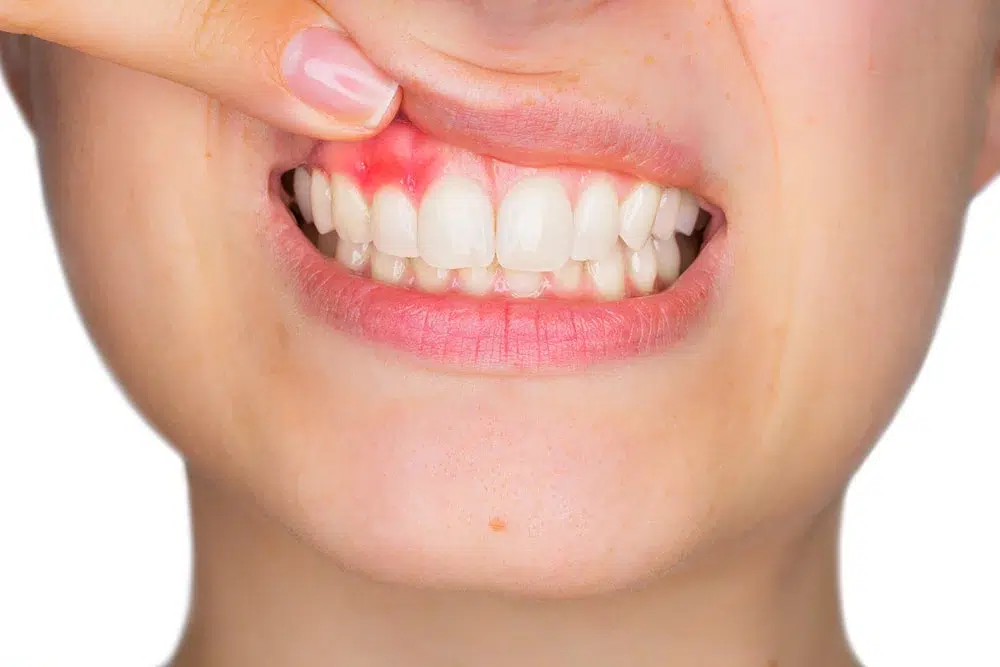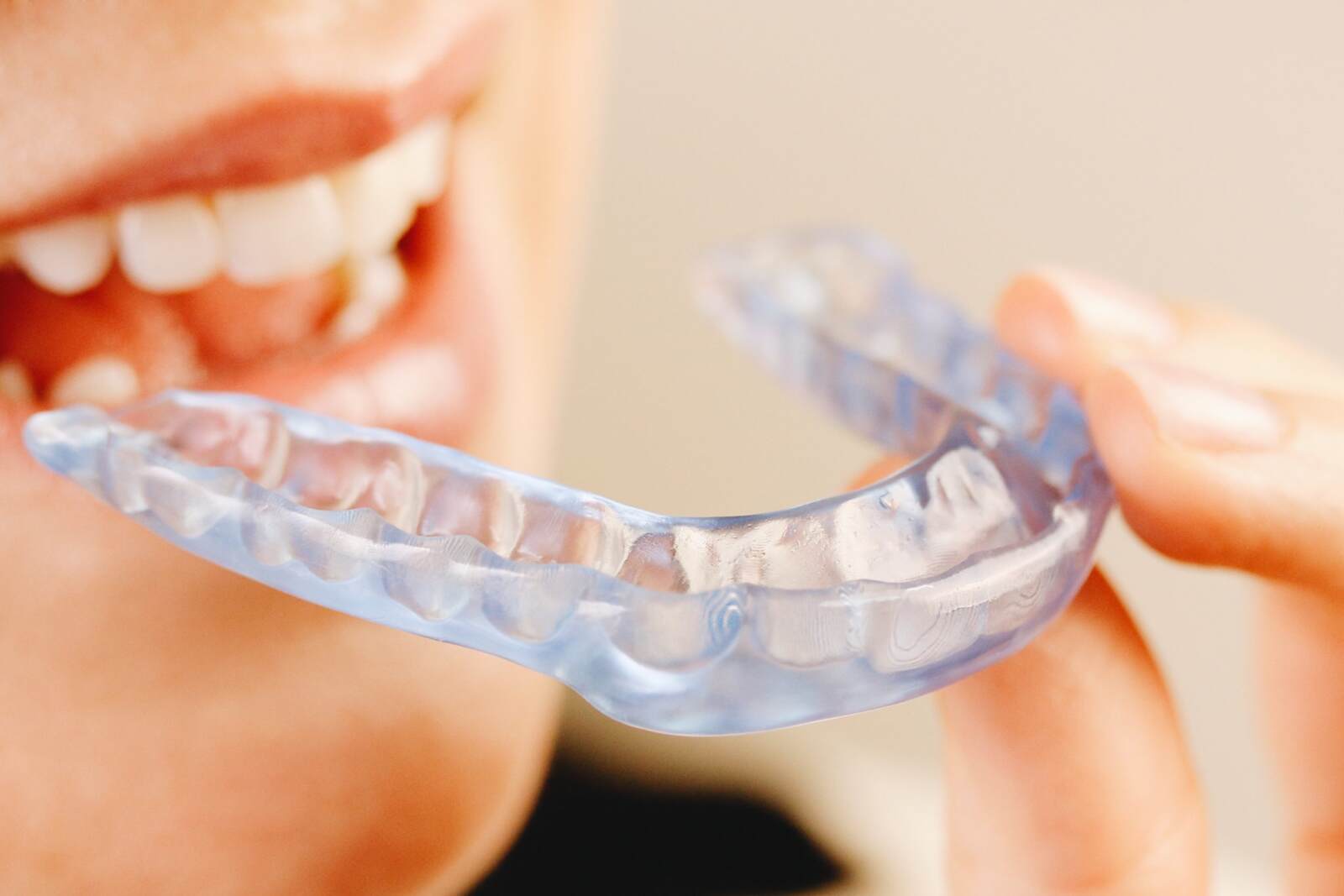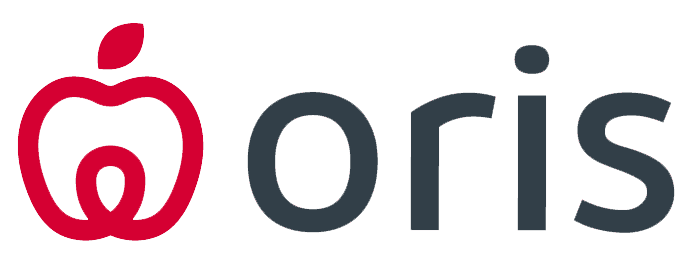Invisible orthodontics
Invisible orthodontics has become one of the most popular options for correcting the position of teeth in both adults and adolescents.
Unlike traditional orthodontics with metal brackets, this treatment uses clear or lingual braces that are virtually invisible, making it a more aesthetically appealing alternative.
What is invisible orthodontics?
Invisible orthodontics is an orthodontic treatment that uses clear or lingual splints to correct the position of the teeth.
These splints are custom-made for each patient and fit perfectly to the dentition.
As the treatment progresses, the splints are replaced with new ones that exert a different pressure on the teeth, gradually moving to the desired position.
Types of invisible orthodontics:
There are two main types of invisible orthodontics:
- Invisible orthodontics with splints: This is the most common type of invisible braces.
The splints are made of a clear plastic material and are placed over the teeth.
They can be easily removed and put on, which facilitates oral hygiene. - Invisible lingual orthodontics: In this type of orthodontics, the brackets are placed on the inside of the teeth, making them even more invisible.
However, lingual orthodontics can be more uncomfortable than braces and may require more treatment time.
Similarities between invisible orthodontics with splints and lingual orthodontics:
- Aesthetics and discretion: The main similarity between both types of invisible orthodontics is their invisibility.
Both the splints and the lingual brackets are placed in such a way that they are not visible to the naked eye, allowing the patient to maintain a natural smile throughout the treatment. - Customization: Both systems use customized splints or brackets, custom-made for each patient.
This ensures a precise fit and controlled movement of the teeth, optimizing the effectiveness of the treatment. - Follow-up and control: In both cases, regular visits to the orthodontist are required to monitor treatment progress and make any necessary adjustments to the braces or brackets.
The frequency of these visits will depend on the type of invisible orthodontics and the individual patient’s case.
Beyond the similarities:
While they share these fundamental characteristics, invisible orthodontics with splints and lingual orthodontics also have notable differences that should be considered when choosing the most appropriate option:
- Comfort: In general, splints are usually more comfortable than lingual braces because they do not cause irritation to the tongue or gums.
However, some patients may experience mild discomfort when adjusting to splints during the first few days. - Hygiene: Splints are removable, which facilitates daily oral hygiene.
Lingual brackets, on the other hand, are fixed and require more specialized care with interdental brushes and specific mouthwashes. - Precision and control: Lingual orthodontics offers greater control over individual tooth movement, making it a more suitable option for complex orthodontic cases.
Splints, on the other hand, work better in less complex cases. - Duration of treatment: Treatment time is usually similar for both types of invisible orthodontics, but as we discussed above lingual orthodontics may require a little more time in some cases.
- Cost: Lingual orthodontics is usually more expensive than invisible orthodontics with splints, due to the complexity of the technique and the materials used.
- Hygiene: Removable splints make oral hygiene easier, while lingual orthodontics requires more care with interdental brushes and specific mouthwashes.
- Speech: Lingual orthodontics may slightly affect phonetics during the period of adaptation.
- Visits to the orthodontist: Regular visits are required in both cases, but lingual orthodontics may require more frequent appointments for adjustments and checkups.
Who is invisible orthodontics suitable for?
Invisible orthodontics is a good option for most people who have crowded, crooked or gapped teeth.
However, it is not suitable for all cases.
Your orthodontist will evaluate your individual case to determine if invisible orthodontics is the right treatment for you.
In which cases does it work?
- Crowded teeth: Invisible orthodontics is effective in correcting mild to moderate crowding.
- Crooked teeth: Slightly crooked or tilted teeth can also be treated with invisible orthodontics.
- Spaces between teeth: If you have spaces between teeth, invisible orthodontics can help you close them.
Who is it not suitable for?
- Complex cases: If you have severe bite problems or very misaligned teeth, invisible orthodontics may not be enough.
In these cases, traditional braces may be a better option. - Lack of commitment: The success of invisible orthodontic treatment depends largely on the patient’s commitment.
If you are not willing to wear the aligners as directed, treatment may not work. - Oral health problems: If you have untreated gum disease or tooth decay, these should be addressed before beginning treatment with invisible orthodontics.
In any of the above cases, a qualified orthodontist should determine the appropriate treatment for you.
Advantages of invisible orthodontics over traditional braces:
- Aesthetics: Invisible orthodontics is virtually invisible, making it a good option for people who are concerned about their appearance.
- Comfortable: Invisible orthodontics is more comfortable than traditional orthodontics with metal brackets.
- Removable: Invisible braces with splints can be easily removed and put on, which facilitates oral hygiene.
- Effective: Invisible orthodontics is an effective treatment for correcting a wide range of orthodontic problems.
Disadvantages of invisible orthodontics compared to traditional braces:
- Cost: Invisible orthodontics can be more expensive than traditional orthodontics with metal brackets.
- Treatment time: Treatment time for invisible orthodontics can be longer than traditional orthodontics with metal brackets.
- Discipline: Invisible orthodontics requires the patient to be disciplined and wear the splints as directed by the orthodontist.
Most commonly used invisible orthodontic systems: (Important for linking)
- Invisalign: Invisalign is one of the most popular invisible orthodontic systems in the world.
It uses custom-made clear splints to move teeth gradually.
Invisalign is a good option for a wide range of orthodontic problems, including crowded, crooked, and gapped teeth. - ClearCorrect: ClearCorrect is another popular invisible orthodontic system that works similarly to Invisalign.
ClearCorrect uses custom-made clear splints to move teeth gradually.
ClearCorrect is a good option for people looking for an alternative to Invisalign. - OrthoSmile: OrthoSmile is an invisible orthodontic system that uses clear brackets made of ceramic or sapphire.
OrthoSmile brackets are more aesthetically pleasing than traditional metal brackets and are less visible than lingual brackets.
OrthoSmile is a good option for people looking for an invisible orthodontic option that is both comfortable and aesthetically pleasing. - Inman Aligner: Inman Aligner is an invisible orthodontic system used to correct crowded and slightly crooked teeth.
Inman Aligner uses clear, removable splints that are worn for 20 hours a day for 14-20 weeks.
Inman Aligner is a good option for people looking for a fast and effective invisible orthodontic option. - Spark: This system uses clear splints made from a patented material called Tru-Active, which the brand claims exerts greater force on the teeth for faster results.
Spark also offers a mobile app that allows patients to monitor their progress and communicate with their orthodontist. - SmileDirectClub: Unlike traditional systems that require face-to-face visits to the orthodontist, SmileDirectClub offers invisible orthodontic treatment completely at a distance.
The patient receives a kit at home with the necessary splints for treatment, along with detailed instructions and virtual support from professionals. - Dream Align: This system is characterized by the speed of its treatment, as it promises to align teeth in as little as 6 months in most cases.
Dream Align uses clear splints made of high quality material and offers personalized follow-up by qualified orthodontists.
Conclusions
Invisible orthodontics has revolutionized the world of orthodontics, offering the people of the ORIS clinic an esthetic and comfortable alternative to correct the alignment of their teeth and show off a radiant smile.
In this blog, we have explored in depth the different aspects of invisible orthodontics, from how it works and the cases for which it is suitable, to the different systems available and their benefits.
If you are considering invisible orthodontics Barcelona, we recommend that you consult with us(Link) to evaluate your individual case and help you choose the treatment that best suits your needs.
Remember that invisible orthodontics is an investment in your health and well-being, not only improves the aesthetics of your smile, but can also prevent bite problems, improve oral hygiene and increase your self-esteem.
Artículos relacionados
Comprehensive oral health





